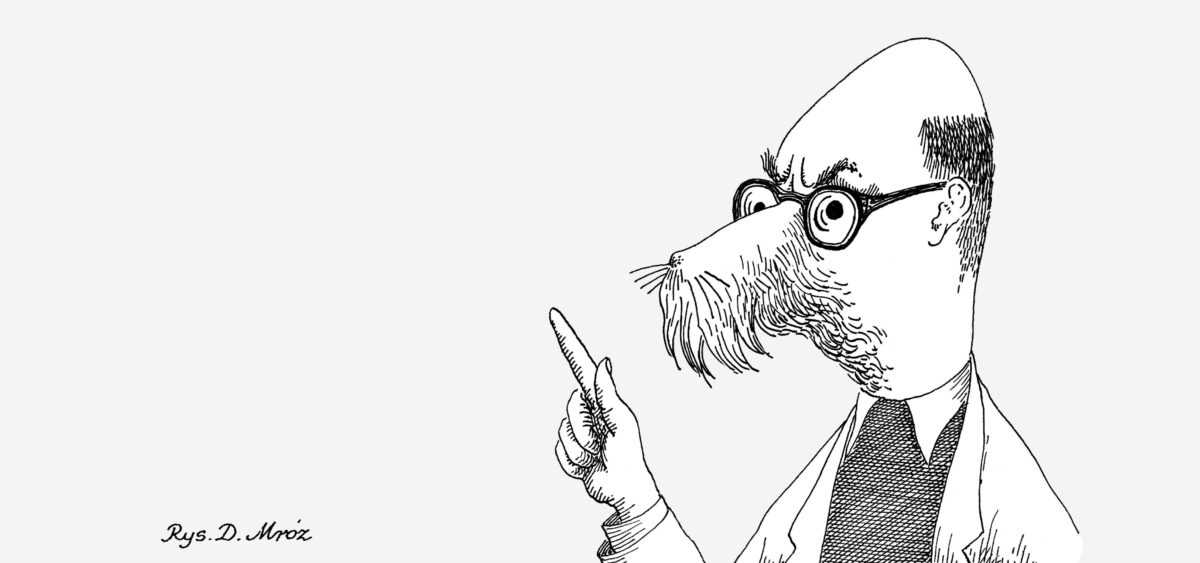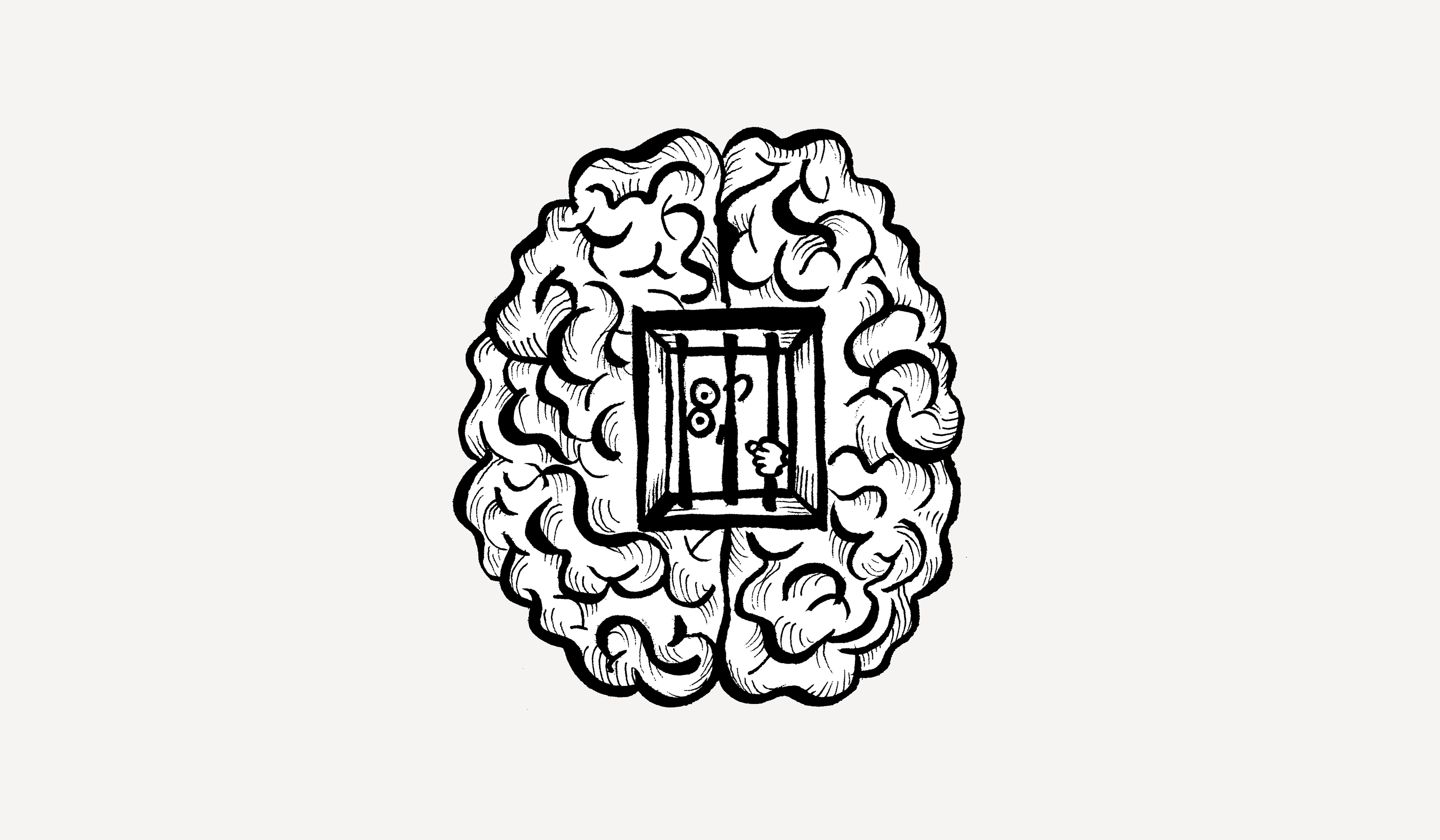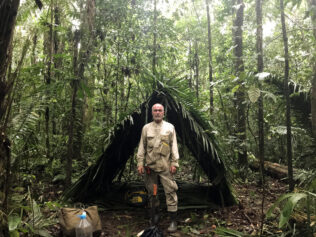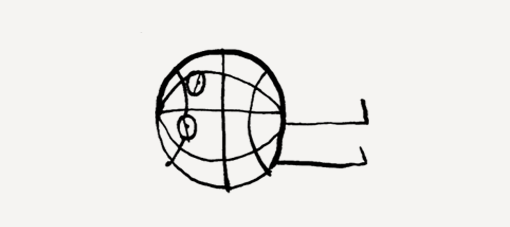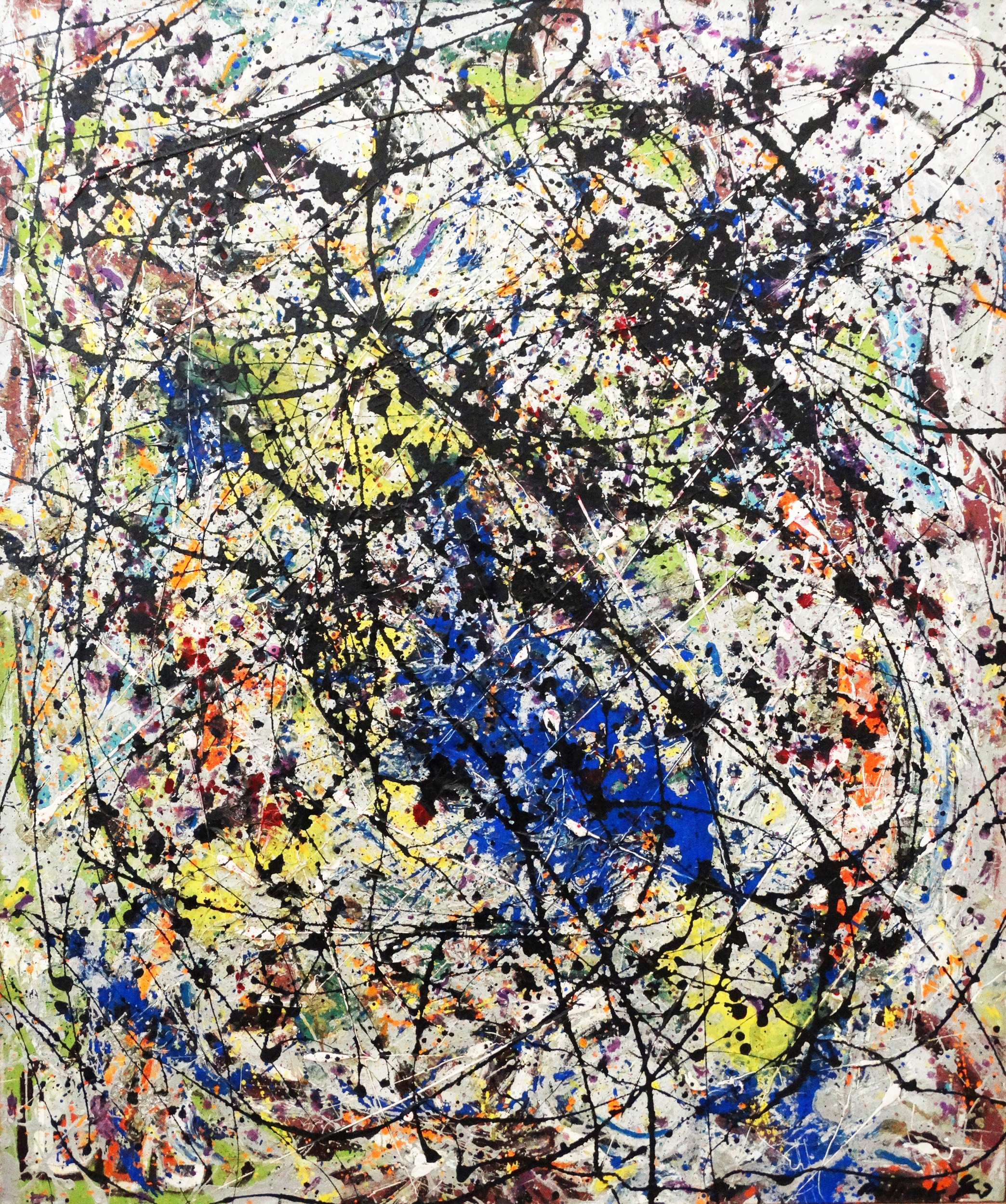
Italian scientist Luca Turin, inspired by complex perfume fragrances developed and proved a theory that can be summarized in just four words: smell is a vibration.
It’s remarkable how little we still know about the workings of the sense of smell. As for sight and hearing, scientists unanimously indicate the wave-like, vibrational foundation of both. Images are caused by light waves, and sound by vibrations of air. As for the nature of olfaction, experts are still arguing. Traditionalists believe that odorous molecules enter the nose and then bind with the appropriate receptors, like a key going into a lock. However, some researchers believe that smell, just like sight and hearing, is based on vibrations. But what could be vibrating inside the nose, exactly, and how are those vibrations captured? Luca Turin, enfant terrible of biophysics and the biggest advocate of this hypothesis, is undoubtedly the best person to ask.
The Inferior Sense
If we start at the very beginning, we must go back some four million years. That’s when Australopithecus, on his way to further humanization, began walking on two legs and, as could be suspected, largely lost his sense of smell, so useful to him back when his nose grazed shrubbery. Further out on the path of evolution, we lost the functionality of the vomeronasal organ, used by animals to recognize pheromones—signals of fear or sexual arousal. Had it not been for evolution, life could have been much simpler…
Ancient Greek natural philosophers considered olfaction to be an inferior human ability. Hearing, they pointed out, enables the experience of music. Sight allows for enjoying light, as well as the sky, sun, and stars; it invites us into the world of ideas. Smell, they asserted, was a more animalistic sense.
Modern science appears to have inherited this dismissive attitude towards smell, cemented by the French surgeon and anatomist Paul Broca. In 1879, he presented the results of his research, suggesting that the human olfactory bulb—the part of the nervous system responsible for experiencing smells—is remarkably small in relation to brain size. This discovery led Broca to believe that sense of smell is much less important for humans than it is for dogs, cats, or mice.
Shortly after, in 1894, German chemist Emil Fischer presented his theory of enzyme action, still prevalent today, and referred to as the lock-and-key theory. According to his proposal, an enzyme molecule hits a substrate receptor with a corresponding shape, triggering an impulse that sends information to the olfactory bulb, which in turn passes it on to the brain. Similarly, the complementarity of structures, also called the host-guest complex, is now used to explain many other phenomena of the human body, such as the functions of antibodies and antigens. This analogy lends plausibility to Fischer’s theory, although it fails to address some very serious doubts.
Shape or Vibration?
In light of this theory, it’s difficult to explain why molecules of very similar construction can give the impression of a completely different smell. This issue was pondered, among others, by Malcolm Dyson—a Scottish chemist who, in the trenches of World War I was the first to realize how important it was to recognize the smell of mustard—an indication of an incoming sulfur mustard attack—commonly known as “mustard gas”)—or a stench of a musty hay—characteristic of phosgene, another lethal war gas). Those experiences left a mark on his health, but also encouraged him to carry on with research. Dyson discovered that odorants of similar smells (olfactory groups) could have very different shapes, while being made of the same sets of atoms. Thus, the scientist observed that various compounds of musky odors consist of a group made of carbon and oxygen, connected by a double bond (C=O). This discovery led him to coin a theory that it is not the shape of a molecule but the vibrations of its bonds that create the odor.
Around the same time (we’re in the 1920s), the Indian physicist C. V. Raman visited Europe. Seeing the iridescent azure of the Mediterranean guided him to the theory of inelastic reflections of photons that scatter some of their energy and cause vibrations of molecules responsible for water opalescence. Inspired by Raman’s discovery, Dyson proposed a hypothesis that the nose is a type of Raman spectrometer, a device that measures a chemical composition based on a wavelength emitted by an excited molecule. It was a breakthrough theory, but scientists didn’t take much of a “whiff,” as it did not explain how a nose can actually read those vibrations. A solution emerged in the 1980s when the unorthodox and perfume-loving biophysicist mentioned earlier, Turin, announced his research.
Jumping Electrons
The fragrance itself was, and still is, a radical surprise. A perfume, like the timbre of a voice, can say something quite independent of the words actually spoken. What Nombre Noir said was “flower.” But the way it said it was an epiphany. The flower at the core of Nombre Noir was half-way between a rose and a violet, but without a trace of the sweetness of either, set instead against an austere, almost saintly background of cigar-box cedar notes. At the same time, it wasn’t dry, and seemed to be glistening with a liquid freshness that made its deep colors glow like a stained glass window.
This is the description of the olfactory epiphany experienced by the young Luca Turin in the Galeries Lafayette in Paris at the launch of Shiseido’s Nombre Noir perfume. This sensation made him take up research on the nature of a fragrance seriously.
Leaning toward the vibrational theory, Turin came across a description of a characterization technique called IETS (inelastic electron tunneling spectroscopy). It uses the quantum mechanical phenomenon called tunneling—an electron’s ability to “dissolve” while penetrating the energetic barrier and emerging on the other side. During the IETS test, two metal plates are placed very close to each other. When voltage is applied to the negatively-charged plate (called a donor), electrons collect on it and are then attracted by the other, positively-charged plate (the acceptor). In the world of classical physics, electrons don’t have enough energy to make the jump between the plates, but as they are quantum objects, they can tunnel from donor to acceptor. This is an elastic tunneling process, as electrons do not lose or gain energy from the leap. However, it can happen that an electron with a lower energy level appears on the acceptor side; that’s what we call inelastic tunneling. In that case, some other compound has to exist between the plates in order to absorb the difference in energy levels.
Turin believes that the same phenomenon takes place in the olfactory receptors. Instead of the donor plate, there is an electron nestled in the receptor molecule. Once an acceptor approaches it—in the form of an odorant with the appropriate vibration—the electron tunnels, and the excess energy activates proteins that cause neurons to send information. Turin confirmed his theory with a series of experiments where he modified odorant molecules without changing their shape. He achieved this by replacing hydrogen with its heavier isotope, deuterium, wherein the nucleus contains a neutron in addition to a proton, making it heavier, so that it oscillates in lower frequencies. This seemingly insignificant swap resulted in a change in perceived smell.
Cross-checking his theory in the opposite direction, Turin also did the following: thiols, a –SH functional group (where S signifies sulfur, and H is for hydrogen), have a peculiar odor, opined by the beloved Polish cartoon character Tytus de Zoo in a little poem: “Rotten egg poured out of its shell, garlic, onion, and a pile of smell.” Knowing that the bond of sulfur and hydrogen vibrates at a frequency similar to that of a barium and hydrogen bond, Turin predicted that a compound known as decaborane would produce a similar odor—he was right. This experiment was the first case to guess a molecule’s scent based on its structure, which is a feat that the perfume industry has struggled with for years, blindly producing molecules only to examine their fragrances post-factum.
Scents in a Maze
Turin’s theory triggered a wave of criticism across the scientific community. When I asked the author about the reason for such strong objection, he explained that apart from the aversion to novelty that is common even among scientists, his claims, oscillating between physics and biology, cause a mix of confusion and hostility. It certainly didn’t help that among the most devoted advocates of the classic lock-and-key theory were Richard Axel and Linda Buck—the most accomplished of all olfaction researchers, the Nobel Prize laureates responsible for discovering the genes coding the proteins of the olfactory receptors. It is also worth noting that Turin, since the very beginning of his career, has exhibited an exceptional ability for getting into conflicts with the scientific community.
As a twenty-seven-year-old in the early 1980s, he moved from London to Nice—at the time, French institutions were heavily invested in science, attracting many talented students. Another advantage of the city was its proximity to Grasse, a center of the perfume industry, full of old pharmacies where Turin could expand his collection of unique perfumes and forgotten scents.
The idyll ended quickly when Turin, then a young scientist at the French National Centre for Scientific Research (CNRS), accused his team leader of falsifying research. Although the charge was confirmed years later, Turin was quickly labeled persona non grata in all scientific circles along the Seine. He was also unafraid to criticize such prominent centers as the Massachusetts Institute of Technology (MIT)—where he was a longtime employee—of predatory policies regarding grants distribution.
Despite his difficult character, the scientist still managed to make some allies, such as Efthimios Skoulakis from the Alexander Fleming Biomedical Sciences Research Center in Athens. Conducting a clever experiment on fruit flies (Drosophila melanogaster), he locked them inside a maze, pumping acetophenone—a compound, known for its stifling sweet aroma of hawthorn or harsh orange-blossom—into one side and attracting the insects to its scent. In the next stage, Skoulakis left acetophenone in one arm of the maze but added a manipulated version of the same compound while in the other, a manipulated version of the compound was substituted in successive trials. He gradually replaced hydrogen atoms with deuterium: first, three, then five and eight atoms were swapped for the heavier isotope. When he replaced just three atoms with new ones, the flies were confused, as the difference was minimal. However, five deuteriums, let alone eight deuteriums, were enough for the flies to realize the deception and head for the original acetophenone, unspoiled by the manipulated version.
Turin, on the other hand, conducted a similar experiment on himself, locking the door of his lab with a deuterium-heavy version of acetophenone. After a few deep inhales, he was pleased to find that, as suspected, molecules with altered vibrations give off a different odor—“less sweet, more solvent-like.”
However, an experiment carried out on just one participant, and one with a strong interest in the results, is not enough in light of the scientific method. It is no surprise that Leslie Vosshall and Andreas Keller from the Rockefeller University repeated the experiment, only this time inviting twenty-four volunteers to participate. The results, published in Nature Neuroscience, stated clearly that not a single participant noticed any difference between the scents. This dealt a serious blow to Turin’s theory, but he was undeterred. In 2012, the scientist conducted the same test once again at the University College London, this time with a group of eleven volunteers. None of them recognized the altered acetophenone, confirming Vosshall and Keller’s results. However, Turin had one more molecule ready for testing, in which he swapped not eight, but twenty-eight hydrogen atoms for deuterium. This time, the vast majority confirmed the scent had changed.
Where Two Worlds Meet
The various applications of quantum mechanics in the field of biology are summed up well in the captivating book Life on the Edge: The Coming of Age of Quantum Biology by British physicists Jima Al-Khalili and Johnjoe McFadden. The authors argue that the main obstacle in accepting the quantum side of life is the very particular quality of quantum events. A rubber ball won’t roll over to the other side of a hill unless it goes at a fast enough speed. Meanwhile, an electron is capable of doing so, through the previously described “tunneling.” In the macroscopic world, such miracles never happen, as can be confirmed by anyone who has ever tried to tunnel their head through a wall.
And yet, the authors show us that there are cracks where those two realities meet, and that’s where quantum mechanics can affect our life processes. Such events belong to the field of quantum biology, a relatively young science that emerged in the late 1990s. That’s also when the quantum compass was discovered—a mechanism used by birds to navigate their intercontinental travels.
In Luca Turin’s theory, electrons are used to enable understanding of the ephemeral yet tangible reality of fragrances. This concept was later synthesized with the lock-and-key theory. In this middle-ground version, the shape, or rather the size of an odorant is only responsible for the intensity of a scent. As for the dispute on the functioning of the nose, it was taken to a different field completely, namely the philosophy of science. This shows the conservatism of an environment attached to a certain tradition, which sometimes even goes against empirical evidence. Then perhaps, science, which strives for new solutions while blindly trusting its existing discoveries, resembles Kovalev—Russian Novelist Nikolai Gogol’s Collegiate Assessor, who chased his own nose.
Translated from the Polish by Aga Zano
This translation was re-edited for context and accuracy on January 26, 2023.


